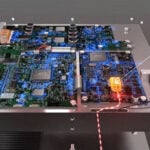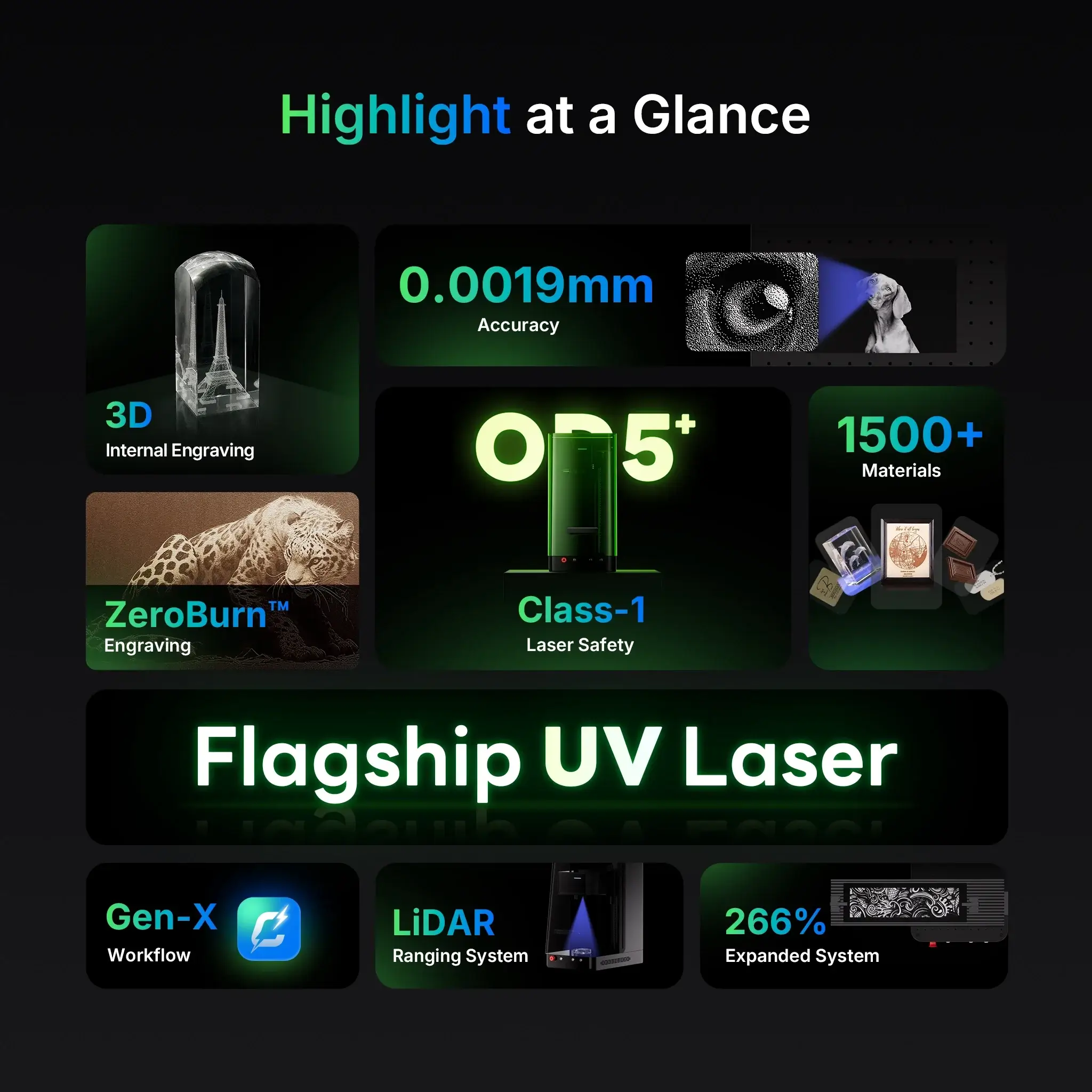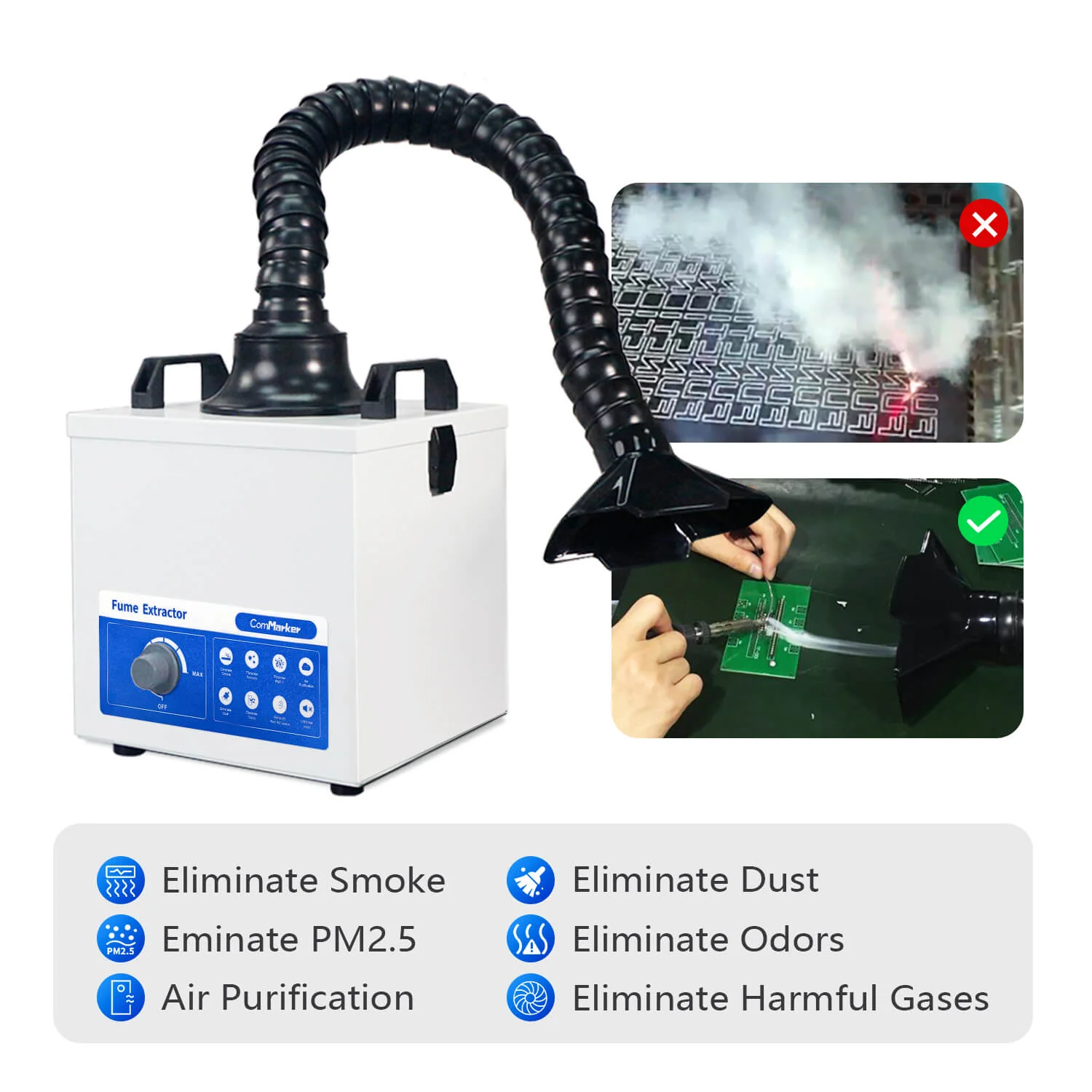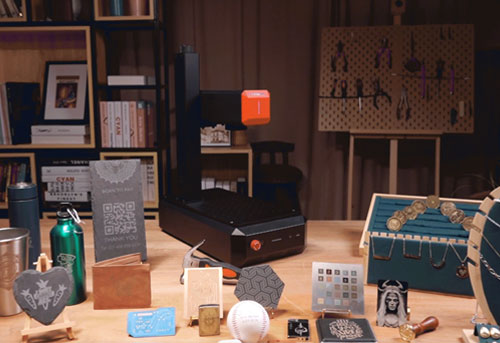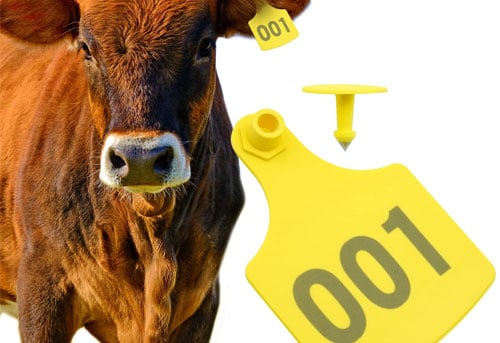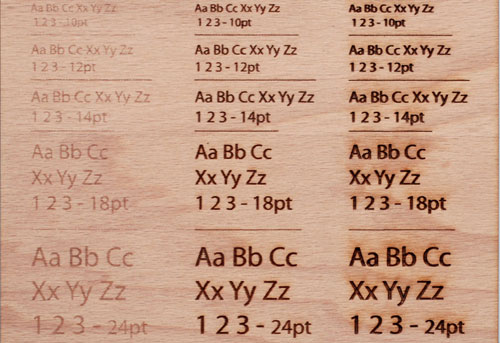When you first buy a laser engraver, it’s tempting to jump straight into projects. But if you want crisp results, smooth workflow, and safer operation, the right laser engraver accessories can make all the difference. Think of these add-ons as the “toolkit” that transforms your engraver from a basic machine into a powerful, reliable workstation.
In this guide, we’ll cover the essential laser engraver accessories every beginner should have, why they matter, and how they improve your engraving experience.
1. Safety First: Protective Gear
Before talking about cool upgrades, let’s start with the most important accessory — safety equipment.
- Laser Safety Glasses: Always wear the correct OD-rated glasses that match your laser’s wavelength (CO₂, Fiber, or UV).
- Ventilation or Fume Extractor: Engraving materials like acrylic, leather, and plastics release fumes. A small desktop extractor or DIY ventilation setup keeps your workspace safe.
- Fire Safety Tools: Keep a small fire extinguisher within reach. It’s rare, but thin wood or cardboard can catch fire during engraving.
👉 Pro Tip: Never skip safety accessories. They’re the cheapest insurance you can buy for both your health and your workshop.
2. Air Assist System
An air assist is one of the best accessories you can add to your laser engraver. It directs compressed air at the engraving or cutting area, and it offers three big benefits:
- Prevents flames and scorching
- Keeps debris away from the laser beam
- Produces cleaner, sharper cuts on wood and acrylic
Many CO₂ laser engravers don’t come with a strong built-in air assist, so adding an external pump is highly recommended.
📌 Recommended Reading: 5 Mistakes to Avoid When Using a UV Laser Engraver
3. Rotary Attachment for Cylindrical Objects
Want to engrave tumblers, mugs, bottles, or flashlights? A rotary attachment is essential. It allows your laser engraver to rotate the object while engraving, so you can create perfect wraps and logos on round surfaces.
- Chuck-style rotary: Great for precision on heavy or odd-shaped items.
- Roller-style rotary: Simple and fast for mugs, bottles, and tumblers.
👉 Beginner Tip: Start with a roller rotary — it’s usually easier to set up and adjust.

4. Jigs, Clamps, and Positioning Tools
One common beginner frustration is alignment. A jig or fixture system helps you place materials consistently, which is critical for repeat orders.
- Magnetic clamps: Hold thin sheets flat on the engraving bed.
- Custom jigs: 3D-printed or wooden jigs keep items like coasters or keychains perfectly in place.
- Camera alignment (optional): Some engravers integrate a camera for live positioning.
👉 Pro Tip: If you plan to sell products, build jigs early. They save hours of rework and wasted materials.
5. Cleaning & Maintenance Tools
Clean optics = better results. Always keep a small kit on hand:
- Lens wipes or cleaning fluid: Prevent dirt buildup on mirrors and lenses.
- Soft brushes & cloths: Remove debris without scratching surfaces.
- Lubricants: Keep moving parts running smoothly.

6. Software Upgrades
Most machines ship with basic software like EZCAD. Beginners often find it clunky. Investing in LightBurn or other user-friendly programs makes your workflow smoother.
Benefits:
- Intuitive interface
- Built-in design tools
- More control over layers, passes, and material libraries
👉 Pro Tip: LightBurn works with both CO₂ and fiber laser engravers, so you don’t need separate software if you upgrade later.
10. Storage & Workspace Organization
Finally, don’t overlook workspace setup. A tidy station boosts productivity.
- Tool drawers for jigs and clamps
- Material racks for wood, acrylic, and metals
- Cable organizers to avoid mess around the engraver
Good organization makes your engraving sessions smoother and reduces mistakes.
Conclusion
The right laser engraver accessories can take you from a beginner hobbyist to a confident creator. Start with safety gear, air assist, and a honeycomb bed. Then, as you expand your skills, invest in rotary attachments, lens upgrades, and dedicated software like LightBurn.







